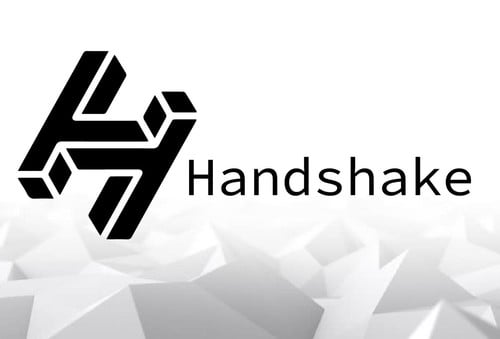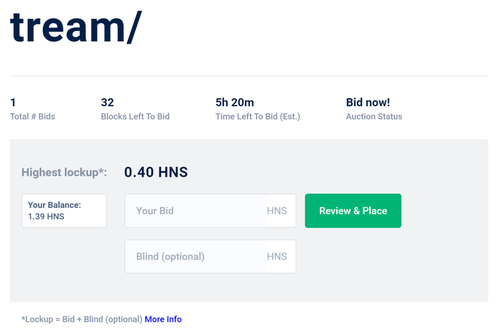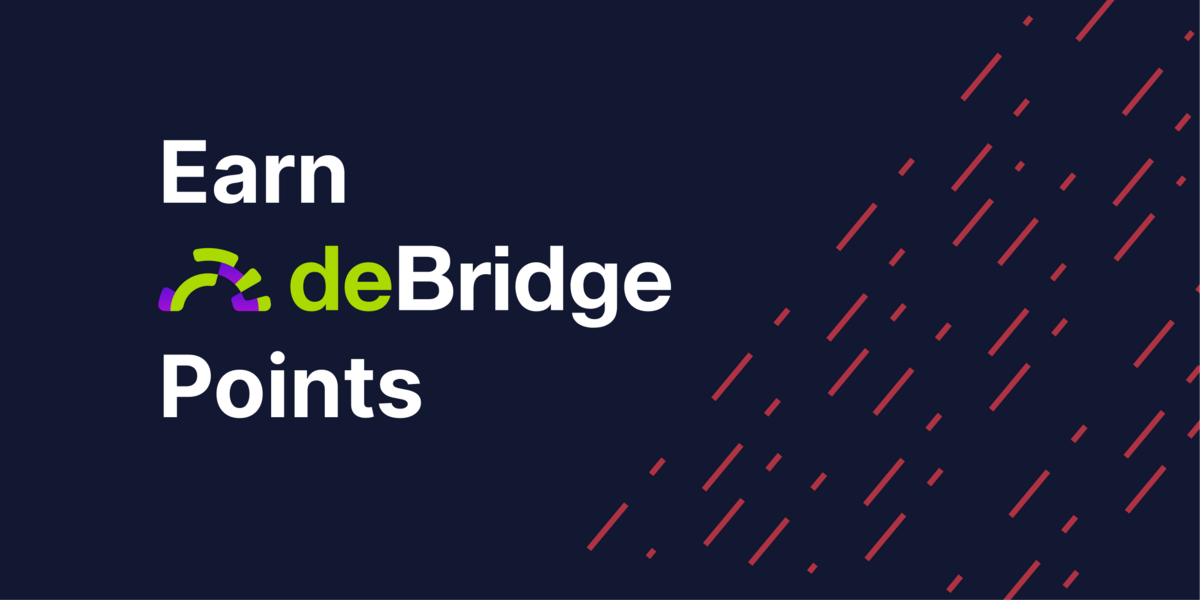Handshake is a public blockchain which started mining on February 3rd, 2020. Handshake’s Proof of Work (PoW) uses the Blake2B + SHA3 algorithm. Handshake enables decentralized top level domain (TLD) name registration via a Vickrey auction as well as new possibilities in name-based authentication. Handshake creates a DNS-compatible, decentralized naming protocol called the Handshake Naming System (HNS) where all participants are helping in managing the root DNS naming zone. This naming protocol can do things like replace ICANN, improve Certificate Authorities (CAs) and more.
How to mine Handshake
This basic guide to mining Handshake (HNS) will make a few assumptions.
-
You aren’t interested in solo mining because your hardware stack is too weak (don’t worry, this is most of us).
-
You are using Windows, Linux, or Mac.
-
You have a GPU worth mining on. This guide goes out the window if you’re trying to CPU mine - and you wouldn’t want to do that anyways.
Without further ado, here are the 5 steps behind “How to Mine Handshake.”
Step 1: Generate a Handshake address (to set as your pool payout address)
Step 2: Choose and register for a Handshake mining pool
Step 3: Choose, download, and install mining software for your OS
Step 4: Configure Handshake Miner with Handshake pool information
Step 5: Start mining Handshake
Step 1: Generate a Handshake address (to set as your pool payout address)
There are three options on how to generate your Handshake address based on your preferred security level.
a) Generate the address with a Handshake full node (HSD)
b) Generate the address using Bob Wallet
c) Generate an address on Namebase by creating an account
Remember that old adage, “If you don’t control the private key, it isn’t yours.” Generating an address with a Handshake node (HSD) is the classic way to control your own private key. Generating an address with Bob Wallet, which is also open sourced, is a close second and a lot easier for the average user. Generating an address on the Namebase website is the simplest by far, but comes with the trade off of not controlling your private key. More specific instructions on how to install HSD or Bob Wallet can be found in their respective READMEs.

Step 2: Choose and register for a Handshake mining pool

There are currently four mining pools supporting Handshake mining. Decide between the four using whatever criteria you’d like - be it fee, anonymity, etc. I like to use the pool that has lower fees - which is 6Block and HNSPool in this instance.
a) F2pool (tutorial)
b) HNSPool
c) 6Block
d) PoolFlare
Signing up for pools has largely been standardized in the cryptocurrency mining industry but these early Handshake pools offer a variety of options. Setup a username and password, email, and 2fa (6Block) and then you’ll be able to access your miner dashboard.
When configuring your mining software, you’ll need to pass username.workerName (any workerName can be used that helps you differentiate between multiple Handshake mining rigs) and a bogus password to the software so it can communicate with the pool. HNSPool is different in that it uses the account password.
Once you have setup an account at F2pool, HNSPool, or 6Block, you’ll need to set your payout address to the Handshake address generated in Step 1. PoolFlare is different in that there is no signup, you can use your Step 1 Handshake address in your miner configuration as a username and the pool will pay you out to that address automatically once the payment threshold is met.
The pictures show the registration and Handshake withdraw address setup on 6Block.

Step 3: Choose, download, and install mining software for your OS
There are several GPU specialized mining clients currently available: HandyMiner, GMiner, SRBMiner, 6miner, and NB Miner. Solo mining with your Handshake full node is also an option, but for the basic guide - we won’t go into it.
-
HandyMiner is available on Windows, Mac, and Linux (also available in GUI)
- HandyMiner README and HandyGuide -
6miner is available on Linux and Windows
- 6miner README -
NBMiner is available on Linux and Windows
- NBMiner README
The other options (GMiner and SRBMiner) that also support Handshake, but since they include a built-in fee, I don’t recommend them. It’s worth noting that NBMiner also has an HNS+ETH merged mining option.
Grab the latest release of your miner of choice and go through the installation process. Make sure that all your prerequisite software is already installed before installing your Handshake miner. Any install questions can be asked in the mining software’s respective communities.
Here are quick install steps for 6miner on Linux:
1. Download the appropriate tar file (https://github.com/6block/6miner/releases)
2. Extract the tar file
3. Navigate to the tar file
4. Go onto Step 4 for configuration of the Handshake mining software

Step 4: Configure Handshake Miner with Handshake pool information
Once your mining software is set up, the next step is to configure your miner so that it can communicate with your Handshake pool of choice and credit you for any work done. You can swap between the pools simply by tweaking your configuration.
Each miner comes with a config file that can be edited to update the Handshake pool which you are mining to. Either enter the pool information during initial configuration or by opening the configuration file with your favorite editor.
-
On HandyMiner, you do this by running the HandyMiner Configurator by opening dashboard dashboard.sh (Linux), dashboard.mac.command (Mac) or dashboard.windows.bat (Windows)
stratum host: handshake.6block.com
stratum_port: 7701
username: <your_username.workerName>
password: <bogus_password> -
On NBMiner, you do this by editing start_hns.sh (Linux and Mac) or start_hns.bat (Windows) to look like:
./nbminer -a hns -o handshake.6block.com:7701 -u <your_username.workerName >:<bogus_password> -
On 6Miner, you do this by editing the relevant parts of the config file mine_hns.sh (Linux and Mac) or mine_hns.bat (Windows) to include:
POOL=handshake.6block.com:7701
ACCOUNT=<your_username>
WORKER=<your_username.workerName>
PWD=<bogus_password>


In case you aren’t using 6Block, here is the configuration information you’ll need to hook up your Handshake miner to other Handshake pools.
- For f2pool, do use the following:
stratum host: hns.f2pool.com
stratum_port: 6000
username: <username.workerName>
password: <bogus_password>
- For HNSPool, do use the following:
stratum host: stratum-us.hnspool.com
stratum_port: 3001
username: <your_hnspool_registered_username>
password: <your_hnspool_registered_password>
- For PoolFlare, do use the following:
stratum host: hns-us.ss.poolflare.com
stratum_port: 3355
username: <walletAddress.workerName>
password: <bogus_password>
Step 5: Start mining Handshake

-
For NBMiner, run start_hns.sh (Linux or Mac) or start_hns.bat (Windows)
-
For 6Miner, run mine_hns.sh (Linux and Mac) or mine_hns.bat (Windows)
-
For HandyMiner, open dashboard dashboard.sh (Linux), dashboard.mac.command (Mac), or dashboard.windows.bat (Windows)
Handshake Mining Support
If you run into issues or have questions while starting Handshake mining, there are a few channels on Telegram run by the mining pools where you can go to request assistance.
Telegram links: https://t.me/handshakemining (HNSPool) and https://t.me/sixblock (6Block)
Related:
Useful links
CoinGecko Handshake (HNS) coin page
CoinGecko Namebase exchange page with trading volume history
Handshake Exchanges: Namebase.io, HotBit.io, GateIO.life
Handshake Block explorers: https://hnscan.com/, https://hnsxplorer.com/
Handshake source code: https://github.com/handshake-org/hsd
Website: https://handshake.org
Documentation Site: https://handshake-org.github.io
API Docs: https://handshake-org.github.io/api-docs/index.html
JSDoc: https://handshake-org.github.io/docs

As a former editor at sites like CCN and BlockExplorer, Caleb has been writing about blockchain technology since 2013. He holds a MSc in Digital Currency from the University of Nicosia and believes that decentralized blockchain technologies such as Handshake are our best bet against a centralized, censored internet. Follow the author on Twitter @bitxbitxbitcoin





 Or check it out in the app stores
Or check it out in the app stores
